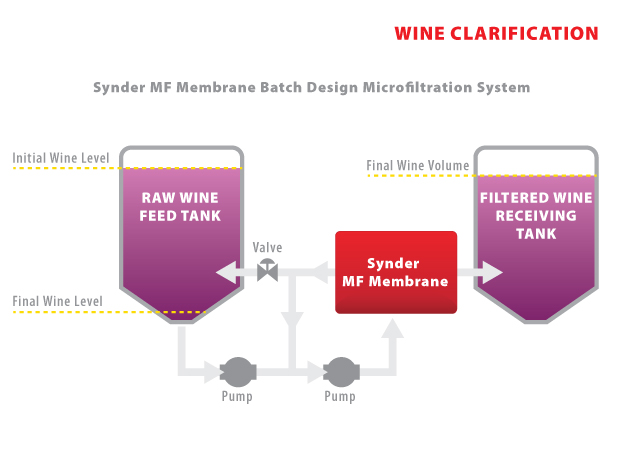Wine Clarification
Because the clarity of wine is the first visual sign of the quality of the wine by consumers, it is important for wine-makers to produce wine that is free of obscurities and microbiologically stabilized. Membrane filtration technology can be implemented in the wine-making process to clarify the wine and reduce the turbidity levels to <2 NTU, the requirement set for its production.
One of the most established methods used to clarify wine is to filter the wine with diatomaceous earth (DE). The disadvantage of using DE filters is that the exhausted substrate is considered a hazardous material which involves additional maintenance costs and disposal charges. Cross-flow microfiltration has become a practical alternative to this, as it can maintain the flavor, aroma, color and clarity of the wine, and provide a higher quality and recovery rate as opposed to the traditional clarification methods.
In addition, wine-makers are able to save on capital costs for the company since one membrane can be used to filter multiple types of wine, since the required pore size to remove turbidity in the wine is about the same for each type.
Benefits of membrane process:
- Faster processing speeds and capacity
- Minimal environmental impact and lower power consumption
- Lower capital and expenditure costs

Recommended membrane:
FR & V0.1
